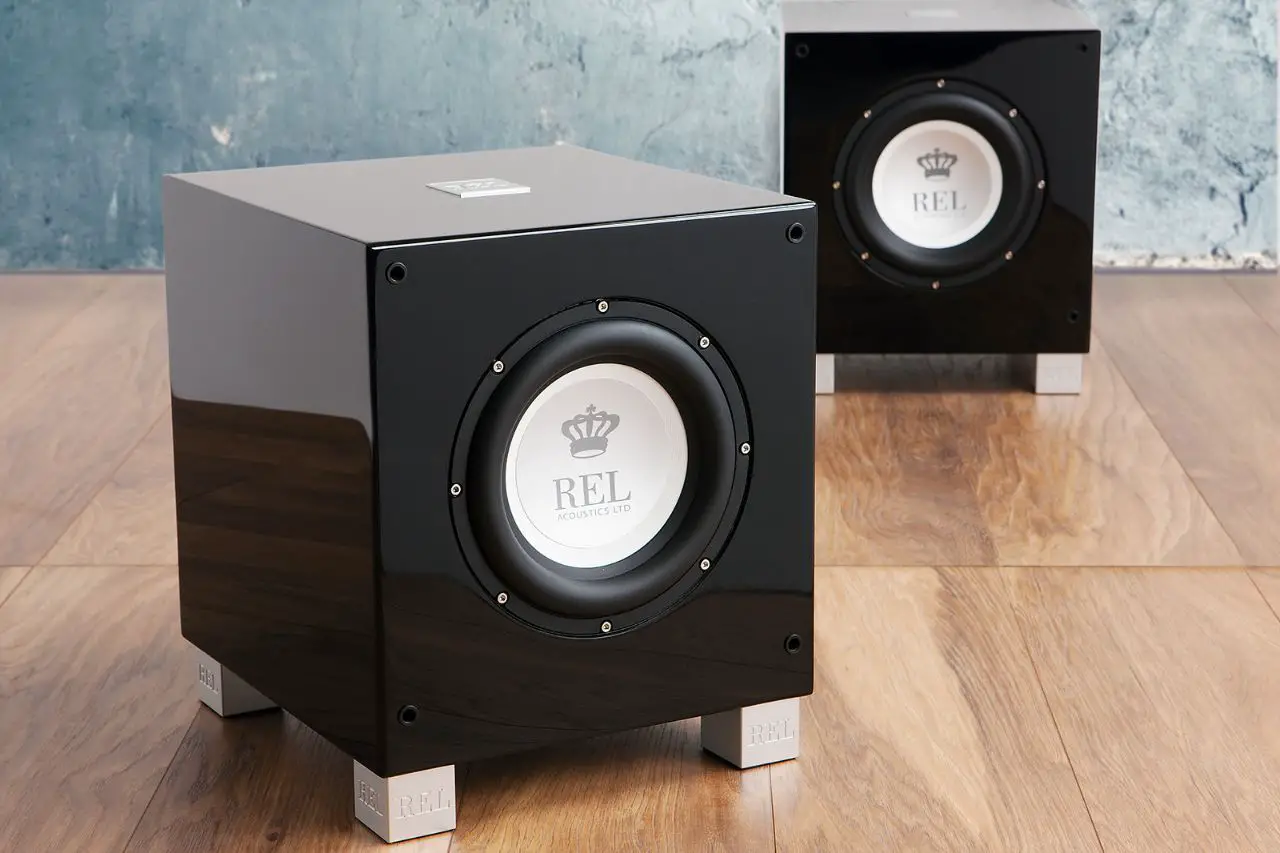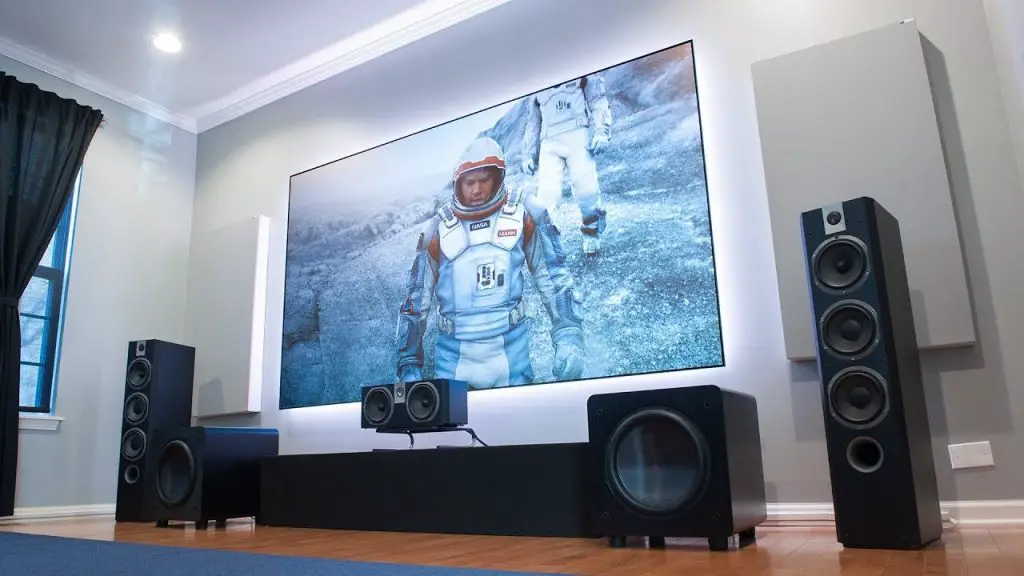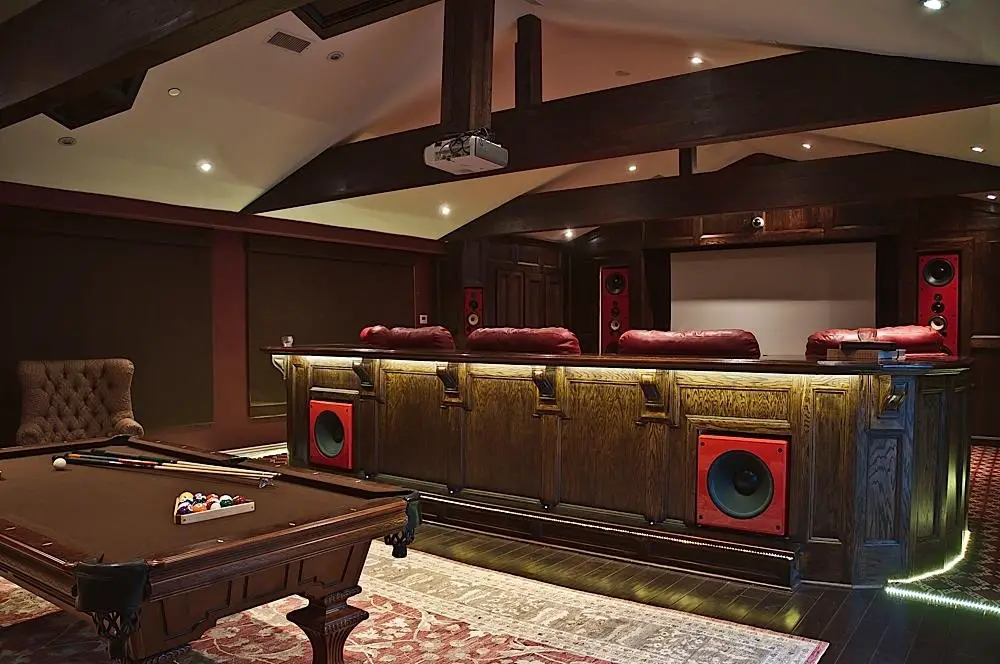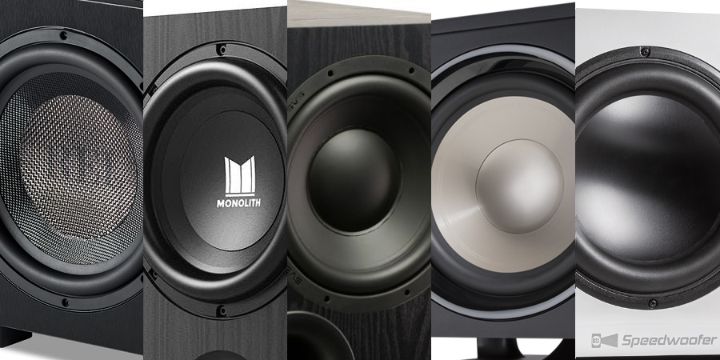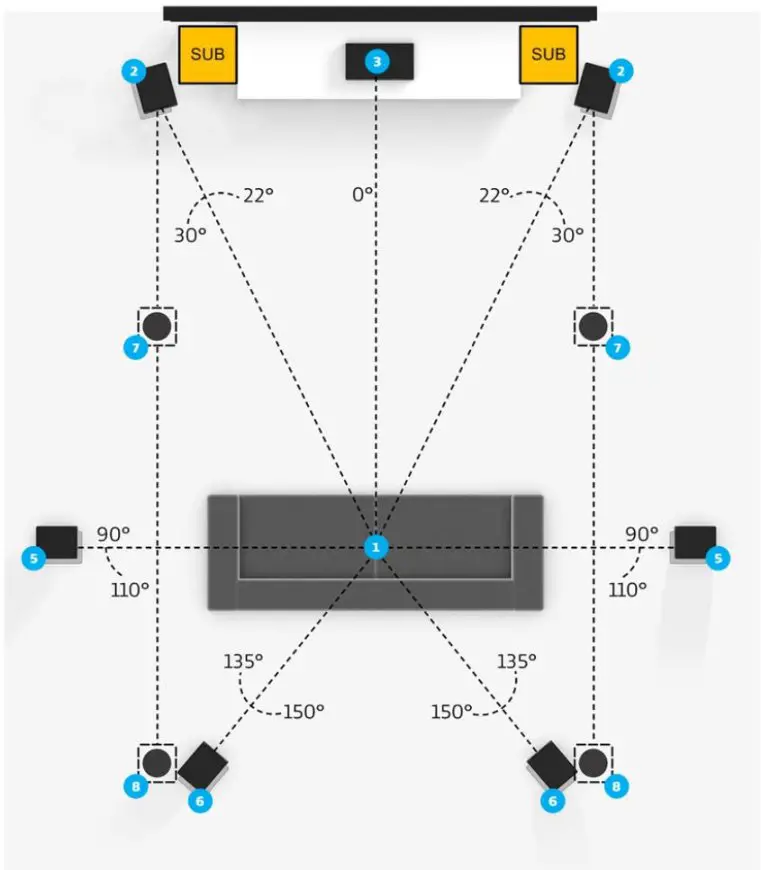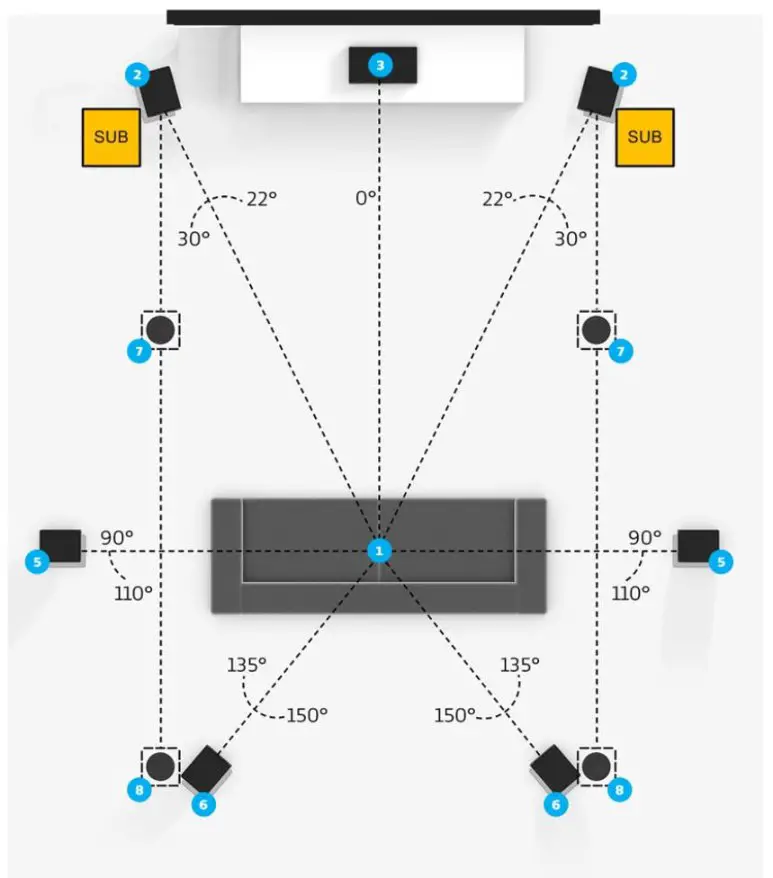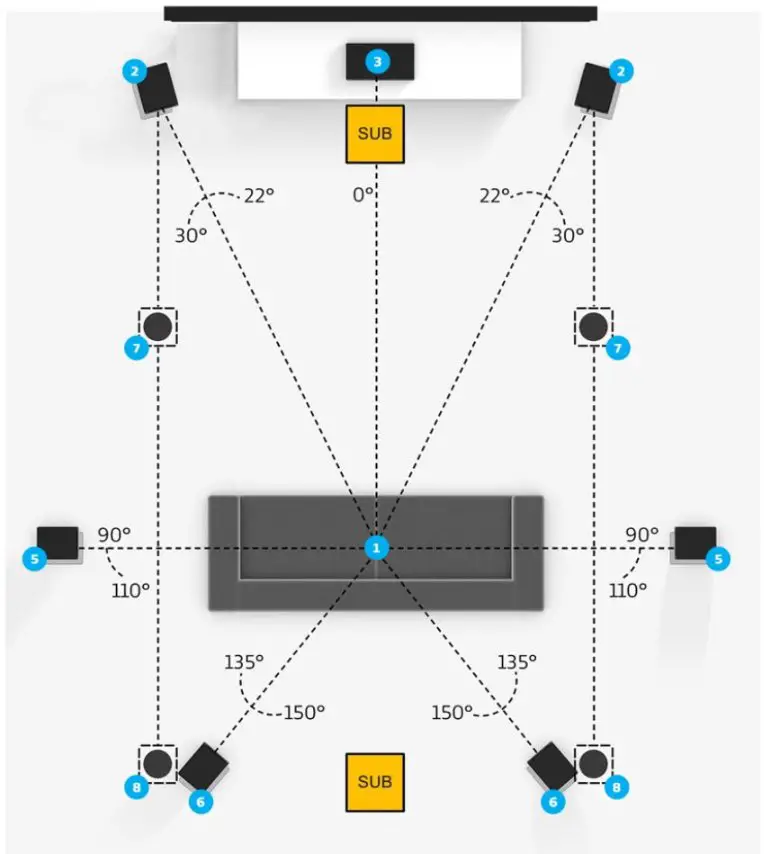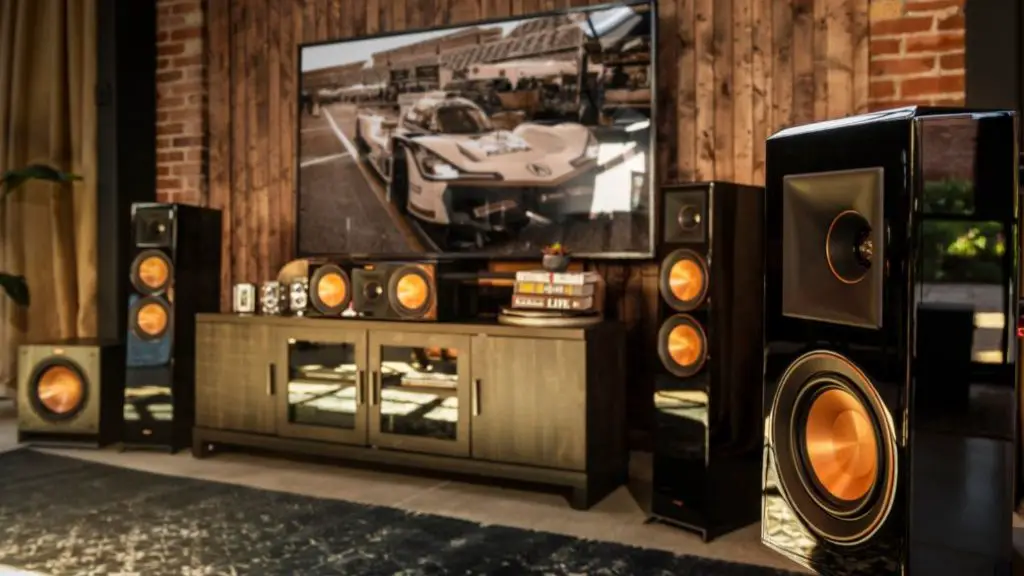Dual Subwoofer: The Complete Guide for All What You Should Know
We all know the 5.1 channel since the DVD era, and 1 refers to the subwoofer channel. However, no one stipulates that only one active subwoofer can be installed. Some music lovers have a larger space in their homes. In that case, only one active subwoofer alone may have enough energy, but there is not much excess. The subwoofer frequency range may sound too loose or slower.
Another issue is not about the size of the space but the issue of low-frequency equalization. Affected by space standing waves. Some specific frequency ranges are strengthened, and some are weakened.
We use the positioning technique to adjust the speaker while listening, improving the standing wave problem. But often, only one position (sweet spot) is improved. The balanced subwoofer response is often not heard in other sitting area. The best way to solve all the above problems is to use two or more subwoofers.
The Room Mode
Before introducing how to use multiple subwoofers, I would like to talk about one of the most severe challenges to be faced when building and using a home theatre system: the Room Mode.
Room Mode is room aspects relate to acoustic factor, a mode formed by the mutual reflection of different sound wave frequencies on the wall. The sound waves with the same amplitude and the same wavelength in the space travel in different directions to cause interference.
Because the low-frequency wavelength is very long, sound absorption requires an integer ratio of the material to the wavelength to be efficient. However, the area of home theatres is relatively small, and the low-frequency is challenging to be absorbed. Eventually, a large amount of low-frequency accumulates, forming what we often call standing waves.
Users who have played home theatre know the hazards of standing waves. It can cause severe distortion of low-frequency signals, prolonged sound, and sound dizziness.
How to solve the room mode problems?
At present, there are five common methods.
- The first thing that must be considered is to modify the length-to-width ratio and shape of the room and try not to be an integer ratio.
- Secondly, the sound building is used for low-frequency absorption processing, which is often referred to as a bass trap.
- The third is placement optimization. Fine adjust the subwoofer and sofa placement to avoid the strong standing wave position as much as possible.
- And here comes the fourth approach. There is also the use of multiple subwoofers to actively offset the standing wave through symmetrical placement.
- The last silver bullet is the low-frequency manager. This time I will focus on the meaning of multiple subwoofers and why you should buy two subwoofers.
How many subwoofers do I need? Are 2 subs louder than 1?
Some people may think that a 10-inch subwoofer sounds good. Is it necessary to buy two 12-inch subwoofers? Will it be too loud?
In many people’s impressions, adding a subwoofer will double the volume, which is wrong. When the sound pressure level increases by 10dB, the human’s ear feeling the loudness is doubled. While the output power of the power amplifier is doubled, the sound pressure level is increased by 3dB.
That is to say, if the sound pressure of a single subwoofer is 100dB, and while the same subwoofer is added, and the power output is the same, the sound pressure level will reach 103dB. The sound pressure level can be increased in the case of dual subwoofers.
But it will not double the loudness. It will increase the low-frequency density. The pressure of the subwoofer will be reduced, as well as the distortion. Doubling the subwoofer is not just making the volume louder.
Can I use two different subwoofers?
In most small home theatre systems, the tremendous significance of dual subwoofers is not to make up for the lack of sound pressure like a stage sound reinforcement system, but to minimize the standing wave interference and make the low-frequency distribution in the entire room more even and flat, thus expand the sweet spot area. That is especially important in a studio with multiple listening positions.
Use two or more subwoofers to enhance or cancel each other’s standing waves. Two subwoofers are connected in parallel. They are placed in front of the sweet spot to cancel out the resonance modes, thereby reducing its influence.
Because different subwoofers have different sound characteristics (phase inversion, airtight, push-pull), different woofer, and different powers; for example, some subwoofers have sufficient volume and good diving subwoofers have a crisp sound and strong percussion. The sound is different.
Dual subwoofers are used to counteract standing waves, and they need to be evenly matched to show a stable and balanced situation. If they are not evenly matched, they will fail to achieve a balanced effect.
Do bass traps improve bass?
The sounding space improvement is very important and influential, but the low-frequency absorption efficiency is low, and it takes up a lot of space. Some people worry that too much bass-absorbing material will cause low-frequency over-absorption.
Don’t worry. Even if the room is full of bass traps, it will not over-absorb. And it isn’t easy to target absorption. As for the multi-subwoofers, the most significant advantage is that it will be easier to operate in practice, and it does not need to spend a lot of money and time to decorate. The effect is similar to that of sound improvement.
I recommend dual-subwoofers first, which can reduce room mode interference, expand the sweet spot of sound, and make up for the lack of energy of a single subwoofer. The low-frequency density is more uniform energy is more abundant.
One expensive sub or two cheaper subs?
That depends on the situation. If your room condition is good and you usually watch movies by yourself, then you can consider buying a high-end one first. Conversely, if the room’s acoustic environment is poor, it is recommended that multiple subwoofers be preferred. That can essentially solve the inherent acoustic defects of the room.
Dual subwoofer placement
Typical dual subwoofer positioning methods are shown in Figure 1 and Figure 2. That is the most common positioning method for veteran players with a two-channel Hi-End audio experience.
The distance between the two subwoofers and the seat is equal to the distance between the left and right channel speakers. This way, even if the traditional two-channel system (without the delay time adjustment of the av receiver) is used. The time and phase of the subwoofer and the left and right channel speakers can be aligned.
Obviously, this is the subwoofer positioning method for two-channel music. If you want to use this approach, I will give you a simple principle, Figure 3. Let the subwoofer close to the back wall, the centre of the subwoofer and take a quarter of the width of the space between them.
The two most ideal dual subwoofer positioning
According to my experiment on multiple subwoofer speakers in different ways, in terms of the placement of two subwoofer speakers, the ideal placements are Figure 4 and Figure 5. Figure 4 shows the two subwoofers close to the centre of the front wall and the back wall. Figure 5 shows the two subwoofers close to the centre of the left and right walls (1/2 of the space length). The two subwoofers displayed in Figure 4 and Figure 5 sound face to face.
Which of these two methods is better? I prefer to choose the method shown in Figure 5. I did not choose the method in Figure 4. First is the problem of the surrounding phase of the two subwoofers. After all, in most home theatre, the seat is rarely placed in the centre, and the seat is usually closer to the back wall. If the rear subwoofer is closer, and the time for low frequencies to reach the seat is shorter.
The super bass and the distance in front are more extended, and the time for the sound to reach the listener will be longer. Even if two subwoofers of the same type are used, the arrival time is still different. Because the two subwoofers in the seat are different, the subwoofer sounds a little fuzzy.
The method shown in Figure 5 is not prone to the problem of time difference. Regardless of whether the seat is in the front or the back, as long as the seat is not off to one side, the sound of the two subwoofers will arrive at the speed seat in a symmetrical position at the same time. The sense of speed and dynamics will be better.
In addition, this approach has a significant advantage. That is, it can get a rich sense of ultra-low volume. You may wonder why does the sense of volume increase without changing the subwoofer? One of the reasons. The subwoofer is closer to the seat, and the square of the distance from the speaker to the seat is inversely proportional to the sound pressure.
In other words, shorten the distance to hear more significant sound pressure. At the same time, because the distance of the wall facing the subwoofer is shortened, the energy of the reflected sound can be increased.
In reality, we should make correct judgments according to the actual conditions of the audio-visual environment. For example, if the left and right walls are asymmetrical or there is no solid wall on the left and right, as shown in Figure 6, if the method in Figure 5 may not be appropriate, I will try the other two methods at this time:
1. Place two subwoofers directly on both sides of the seat. In this way, the subwoofer is closest to the seat and has the most substantial energy. It can also reduce the proportion of space factors.
2. Place the two subwoofers close to each other and place them close to the centre channel speaker. The advantage of this method is that the time and phase are the same, but the disadvantage is that it is not easy to get low-frequency response equalization in other positions except the sweet spot.
How do I set up dual subwoofers?
The brand and model of the two subwoofers should be the same to avoid the difference in characteristics (phase, speed, frequency response and output capability) from affecting the combined effect.
Please check that the phase adjustment of the two subwoofers must be in precisely the same state. If one’s phase is set at 0 degrees and the other is set at 180 degrees, the result of the two phases are opposite, and the energy offset using two subwoofers is worse than using only one!
In the traditional two-channel system with two subwoofers, you can try to adjust the phase (the two phases are still the same as the principal) so that the phase and speed of the subwoofer and the original left and right channels are more consistent, which is helpful for the fusion of the two sounds.
For multi-channel players, I recommend setting the phase of the subwoofer to 0 degrees and measuring the straight line distance from the subwoofer to the listener’s ears. Because the automatic test setting of the av receiver often fails to measure the distance of the subwoofer.
Therefore, after the automatic test from the AV receiver is set, please check with the measured distance data.
If the distance measured by the receiver is too wide, please enter Manual Setup immediately and manually enter the measured distance. That will ensure that the subwoofer is synchronized with the sound of other channels, and the sound will sound faster and more vibrant.
The LPF crossover point of the two subwoofers must be the same. Different and incorrect crossover point settings will seriously affect the balance of the subwoofer frequency response. Please turn the subwoofer’s crossover point to the highest value (or Pass-Through) for the av receiver to determine the subwoofer division frequency.
The volume of the two subwoofers should be the same so that they evenly bear the energy that should be paid for the low-frequency range. Suppose the volume difference between the two is too significant. In that case, one of them will have a heavier duty, which will make the system’s low-frequency output less redundant, and the subwoofer that is heavily burdened by the entire system will be distorted first when the system has a large output. These are all adverse effects caused by uneven burdens.
Make the output of the two subwoofers of the same type equal, you can get the maximum output energy and can make the whole listening area (not only the sweet spot) can have good low-frequency performance.
